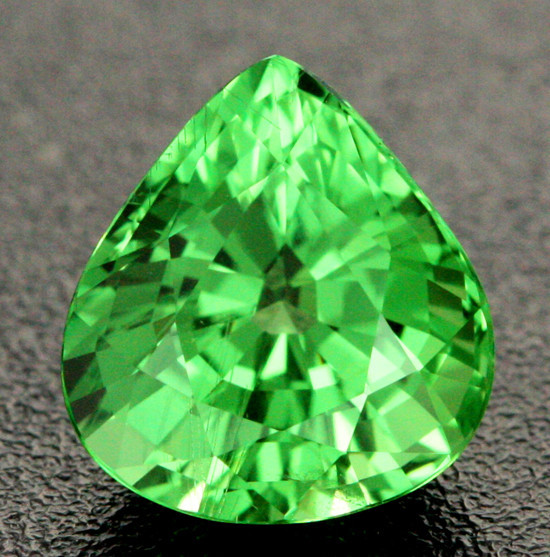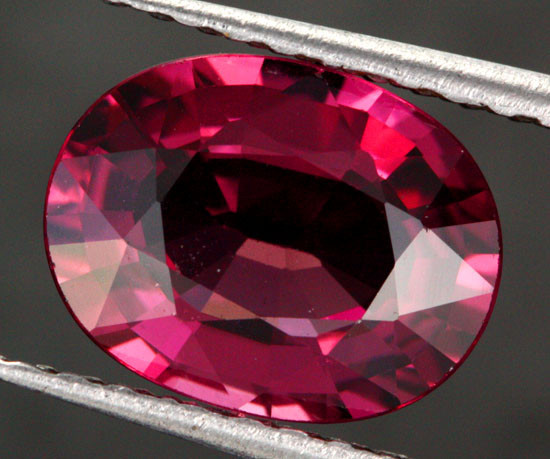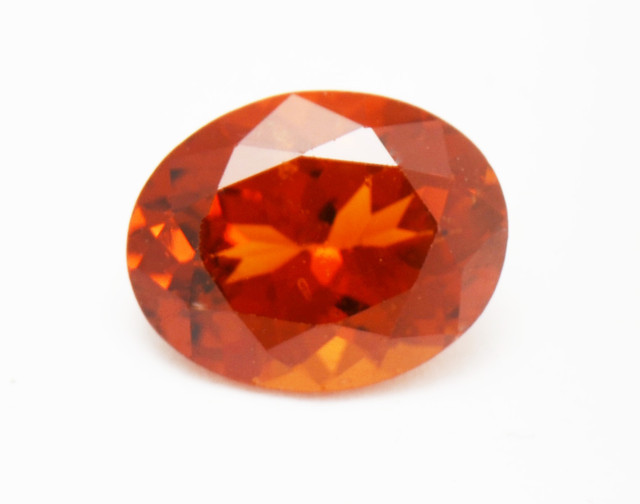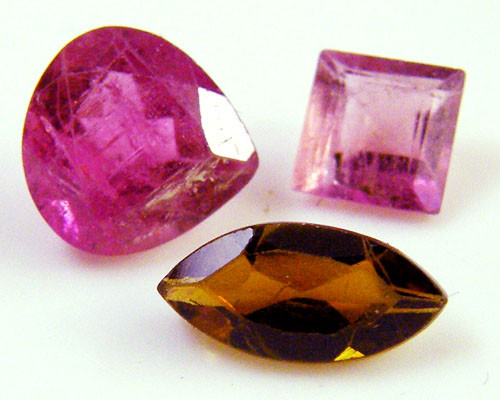
Piedras preciosas de África
 Las fuentes tradicionales de gemas de colores se encuentran generalmente en Sudamérica y Asia, especialmente en Brasil, Birmania y Sri Lanka. Actualmente, África es el principal foco de interés mundial en torno a las gemas.
Las fuentes tradicionales de gemas de colores se encuentran generalmente en Sudamérica y Asia, especialmente en Brasil, Birmania y Sri Lanka. Actualmente, África es el principal foco de interés mundial en torno a las gemas.
Aunque la mayoría de la gente sabe que África es la principal fuente de diamantes, el comercio de piedras preciosas de color está adquiriendo cada vez mayor importancia. Si bien la fabricación de piedras preciosas de color se extiende a través de numerosas minas pequeñas en varios países, los principales países productores africanos se encuentran en las regiones sur y este.
Estos países se extienden desde Namibia, en el suroeste, hasta Etiopía y Madagascar, la isla más grande a lo largo de la costa de Mozambique. Todos se encuentran en la misma región rica en gemas, conocida como el Cinturón Neoproterozoico de Mozambique.
Piedras preciosas de África
 Las piedras de colores procedentes de las minas africanas cambian constantemente, y se descubren nuevas gemas cada dos semanas. Se ha aconsejado a los compradores que "aprovechen mientras puedan", ya que las piedras abundan, pero podrían no estarlo el próximo año. Esto es lo que ocurrió con el excelente granate espesartita, procedente de Namibia.
Las piedras de colores procedentes de las minas africanas cambian constantemente, y se descubren nuevas gemas cada dos semanas. Se ha aconsejado a los compradores que "aprovechen mientras puedan", ya que las piedras abundan, pero podrían no estarlo el próximo año. Esto es lo que ocurrió con el excelente granate espesartita, procedente de Namibia.
Si bien Namibia aún cuenta con un suministro de piedras preciosas, no es fácil conseguirlas, y la mayor parte del granate espesartita proviene actualmente de Mozambique. Los países más importantes que han producido estas piedras recientemente son Madagascar, Tanzania y Mozambique. Sin embargo, Madagascar es conocido por sus recientes descubrimientos de zafiro y rubí.
Además de la piedra mencionada anteriormente, se han encontrado otras piedras preciosas:
Mozambique
Mozambique también se ha convertido en uno de los famosos productores de turmalina Paraíba, y la mayor parte del suministro mundial de Paraíba ahora proviene de Mozambique.
Quizás la operación minera más importante de Mozambique actualmente sea la de las minas de rubíes de Mozambique de Gemfields. Estos rubíes se extraen y se venden directamente en el mercado mediante subasta. Si bien los rubíes birmanos se consideran los mejores del mundo, existe un embargo comercial que impide su entrada a Estados Unidos. Esto ha limitado drásticamente la oferta de rubíes naturales en el país. Mozambique Rubies cubrirá esa escasez produciendo rubíes rojos de gran calidad para el mercado estadounidense.
Nigeria
Dado que el suministro de piedras preciosas de Brasil es bastante limitado, Nigeria se consideraba el mayor proveedor entre los países de África Occidental. Esto es significativo, ya que no se encuentra en el Cinturón de Mozambique.
Nigeria es muy apreciada por su zafiro azul, así como por su gran cantidad de turmalina fina. También es conocida por el zafiro, el granate almandino, la aguamarina y el topacio.
Tanzania
Mientras tanto, Tanzania es una fuente inagotable de joyas. La industria ya emplea a más de 500 millones de personas en la minería a pequeña escala. Tanzania es particularmente conocida por la tanzanita . Este año, las espinelas tanzanas de Mahenge han acaparado la atención. Sus colores pueden rivalizar con los del más bello rubí y su popularidad ha ido en constante aumento. Otras piedras preciosas de Tanzania incluyen el impresionante granate rodolita, el granate tsavorita y varias piedras exclusivas como el circón sin tratar. Mozambique también produce una excelente turmalina en varios colores.
El suministro de estas minas es bastante limitado. A mediados de la década de 1960, se produjeron descubrimientos notables en Tanzania, especialmente de aguamarina, rubí, zafiro y esmeralda. Los descubrimientos más significativos fueron las dos últimas gemas: la tanzanita y el granate tsavorita.
Cinturón metamórfico de Mozambique
La diversidad mineral constituye la porción más significativa del Cinturón Metamórfico de Mozambique, una enorme región continental con más de 600 millones de años de antigüedad. Se considera una región metamórfica que se extiende desde Madagascar hasta el norte de Kenia. A principios de la década de 1970, los geólogos buscaron gemas a lo largo de la frontera entre Kenia y Tanzania.
Esto condujo a un nuevo descubrimiento de rubíes, así como a un notable descubrimiento de tsavorita en el sureste de Kenia. Actualmente, África Oriental se considera la principal región productora de piedras preciosas y tiene el potencial de convertirse en el principal recurso mundial de piedras preciosas de alto valor.
Tanzanita
 La tanzanita se considera una de las piedras más raras del mundo, por su belleza y exclusividad. Su ubicación privilegiada en el mundo de las gemas, con un único suministro mundial, es una reliquia típica que se conservará para la próxima generación.
La tanzanita se considera una de las piedras más raras del mundo, por su belleza y exclusividad. Su ubicación privilegiada en el mundo de las gemas, con un único suministro mundial, es una reliquia típica que se conservará para la próxima generación.
En un futuro próximo, la única manera de poseerla será apropiándose de ella. Uno de los secretos más importantes para mantener el comercio de la tanzanita es la cantidad extremadamente escasa que se descubre de forma intermitente. Algunas personas han oído hablar de la tanzanita verde, pero la mayoría aún desconoce las maravillas de los amarillos y naranjas.
Su escasez y su escasez han propiciado el sustento de los coleccionistas. Algunos entusiastas de la tanzanita bien informados se enorgullecen de presentar una exquisita colección de estas piedras, antes inalcanzables y extraordinariamente inusuales.
La tanzanita es una piedra asombrosa, ya que se encuentra en un solo lugar del mundo. Su azul, con un toque lavanda, es un color magnífico. Gracias a su extraordinaria calidad, los joyeros de Nueva York la han convertido rápidamente en una de las piedras más populares del mundo.
Recibe su nombre del estado de Tanzania, en África Oriental, el único lugar del mundo donde se originó. África es el único continente que ofrece al mundo una gran cantidad de piedras verdaderamente excepcionales, como la tanzanita. Tras su descubrimiento en 1967, los especialistas la distinguieron con pasión como la «Piedra del Siglo XX».
La emoción siempre está presente al descubrir los primeros minerales de color azul intenso, hallados en las colinas de Merelani, en el norte de Tanzania. Hace unos millones de años, estos valiosos cristales también se cultivaban en depósitos en estas inusuales elevaciones.
De hecho, durante mucho tiempo permanecieron ocultos a la vista del hombre, hasta que algunos pastores masái observaron que unos cristales deslumbrantes se reclinaban al sol y se transformaban con ellos. En Merelani, actualmente, se concede la búsqueda de estos codiciados cristales, gracias a pequeñas minas descubiertas, en algunos casos, mediante métodos modernos.
Por lo general, solo se descubren granos diminutos, pero algunos mineros lograron extraer esta gran piedra preciosa. El negocio de la tanzanita está en manos de varios comerciantes certificados, generalmente a pequeña escala, que han forjado relaciones comerciales de confianza con empresas de piedra ubicadas en Israel, India y Estados Unidos.
Se estima que el 90% de los comerciantes de tanzanita son miembros certificados de la ICA (Asociación Internacional de Piedras Preciosas Coloreadas), la cual cumple con los altos estándares éticos de este sector. De esta manera, esta gema especial no es el principal objeto de negociación con canales dudosos, sino que existen rutas comerciales bien establecidas con importantes joyeros de todo el mundo.
Granate tsavorita

La tsavorita se considera una de las piedras más inusuales del mundo, con solo una fuente significativa descubierta hasta la fecha, especialmente aquí en África Oriental. Físicamente, es de mejor calidad que la esmeralda en todos los aspectos, al ser más resistente, más brillante y de un tono verde puro. Esta piedra es de primera calidad, profunda, intensa, colorida y de gran claridad.
La tsavorita se encuentra tanto en Tanzania como en Kenia, pero existe consenso entre gemólogos y vendedores de gemas. Esta piedra también es comparable a la esmeralda. Es vívida, resistente y, por lo tanto, más duradera. Además, es inusual que estas piedras tengan un tamaño de corte superior a 3 cts, lo cual es verdaderamente excepcional.
Estos atributos hacen de esta piedra una piedra preciosa y muy apreciada. La tsavorita es una joya particularmente antigua. El nevado Kilimanjaro se considera la montaña más alta de África. ¿Qué podría ser más ideal que una excelente y resplandeciente piedra verde?
De hecho, la tsavorita, de un verde impecable, es una piedra joven con una extensa historia geológica. Su origen se encuentra en África Oriental, a lo largo de la frontera entre Tanzania y Kenia. Un pequeño número de minas se encuentran en un paisaje exclusivo y atractivo de llanuras secas con colinas desiertas.
Además, es un país peligroso, territorio de serpientes, y actualmente con patrullas de leones. De hecho, desde allí, cerca del prominente Parque Nacional de Tsavo, comenzó una historia memorable. Entonces, ¿qué la hace tan envidiable como piedra? Bueno, por eso mismo. También es una piedra verde, brillante y reluciente.
La gama de colores de la tsavorita abarca desde un verde claro primaveral hasta un azul intenso y un verde bosque profundo, con un efecto energizante y revitalizante. Además, esta piedra es valiosa, especialmente por su gran intensidad. En comparación con otras piedras, presenta un índice de refracción predominantemente alto, de 1.734/44.
No es casualidad que, según antiguos mitos, el granate fuera difícil de ocultar. Se creía que su luz se percibía incluso a través de la ropa. A diferencia de otras piedras, la tsavorita es susceptible a ampollas y grasa. Esta piedra no necesita tratamiento.
Al igual que todas las demás tsavoritas, es simplemente un fragmento de naturaleza limpia e intacta. Otra característica positiva es su dureza. Se considera tan sólida como otras piedras mucho más exclusivas, de aproximadamente 7,5 en la escala de Mohs, pero es claramente menos susceptible.
Esta es una característica significativa, especialmente en lo que respecta a la fijación de la gema. Es menos propensa a romperse por un movimiento impulsivo. También es ideal por su elegante y discreto engaste, en el que las gemas se colocan juntas.
Gracias a su gran intensidad, combina a la perfección con otras piedras como el zafiro, el diamante y el rubí. En casos excepcionales, una tsavorita tallada con más de 2 quilates es una joya extraordinaria y valiosa. Una de las características particulares de esta piedra es que puede mostrar su gran resplandor incluso en pequeñas dimensiones.
Lo increíble de esta piedra es su extensa historia. Con su verde brillante e impresionante, sus excelentes propiedades de desgaste, su gran intensidad y, a un precio relativamente razonable, es sin duda una de las piedras más atractivas y auténticas que existen.
Granate rodolita

El granate rodolita es el granate más importante de la familia de los granates rojos. No debe confundirse con el omnipresente granate piropo, de color rojo oscuro, que suele asociarse con la joyería de colección. Además, este hermoso granate de color ciruela y rojo cereza es una atractiva gema. Se encuentra habitualmente en diversos minerales de todo el mundo; el conocido valle del río Umba, en Tanzania, es la fuente más admirada de la rodolita más fina del mundo.
Rodolita es el término utilizado para describir el hermoso granate rosa, morado o rojo violáceo, una combinación de piropo y almandita. Esta piedra, de moda, presenta un magnífico rojo suave con un admirable tono lavanda o frambuesa. Este nombre se usó principalmente a finales del siglo XIX para explicar el innovador color rododendro del granate, descubierto en Carolina del Norte.
A diferencia de los granates rojos habituales, este suele tener un rojo intenso con matices marrones, y es bastante más claro e intenso. Los ejemplares más excelentes se consideran de un intenso color frambuesa, similar en ocasiones a la más costosa turmalina rubelita . La mayoría de estas piedras presentan una composición cristalina. Los cristales presentan un plano de uniformidad y se dividen en siete simetrías diferentes.
Su extensión y ángulo permiten determinar el sistema al que pertenece una gema. Los granates son composicionales, lo que significa que presentan la misma formación cristalina. Esto hace que el cristal presente formas y propiedades más perfectas. Los granates también pertenecen a la categoría de cristales isométricos, que genera cristales simétricos de base cúbica. La naturaleza cristalina más común de los granates es el dodecaedro rómbico, que tiene forma de doce lados.
La mayoría de los granates están disponibles en tonos rojos, lo que da lugar a la idea errónea de que todas estas piedras son rojas. De hecho, algunas variedades, como la grosularita, pueden presentar una amplia gama de tonos, y la uvarovita siempre se presenta en un verde brillante. Como espécimen de cristal, estas piedras suelen estar bien formadas, y su tono y brillo las convierten en una adición impactante a su colección.
Malaia Garnet
El granate Malaia es una piedra, aunque pocos la conocen por completo. Ha sido objeto de interés por parte de algunos coleccionistas durante dos décadas desde su descubrimiento, principalmente debido a su extrema rareza. Entre el granate piropo y el granate espesartita, esta deslumbrante piedra exhibe una interesante variedad de colores, desde un naranja intenso hasta un atractivo rosa anaranjado, con sus inusuales piezas.
Tanzania es el único yacimiento conocido de esta hermosa piedra, y estas siempre presentan algunas de las piezas más excelentes. El granate Malaya o Malaia es una variedad gemológica que se refiere al granate radiante, de color rosa oscuro, naranja, rojo anaranjado y amarillo anaranjado, una combinación de espesartita y piropo. Se encuentra generalmente en el valle de Umba, África Oriental, cerca de Kenia y Tanzania.
Se creía principalmente que Malaia era también un tipo de granate espesartita. En la década de 1970, los granates Malaia en bruto se combinaban con parcelas distintivas de granate rodolita. Estas inusuales gemas de color se descartaron, y el término que se le dio a este tipo de granate fue Malaia, que significa "swahili" y literalmente significa "paria". Su origen se originó en el tratamiento de una cantidad de granates que no se adaptaban bien a ninguno de los tipos típicos.
La mayoría de estos granates imperiales Malaia presentan inclusiones microscópicas en forma de aguja que no disminuyen la magnificencia general de este material. Algunas de estas piedras también presentan un cambio de color, pasando de brillante a radiante. Los granates con modificación de color suelen tener una estructura de espesartita y piropo. Salvo por la modificación de color, sus propiedades se distinguen de las de la gama Malaia. Su principal fuente se encuentra en África.
Zafiros de fantasía

Los zafiros se extraían habitualmente en África Oriental en la década de 1950, ya que presentan una brillante gama de colores. Existen 67 colores distintos de zafiro de fantasía. De hecho, el valle del río Umba, en Tanzania, genera la mayoría de estos tonos, como un atractivo zafiro amarillo canario y una Padparadscha africana, una piedra de color rosa anaranjado, muy apreciada y rara.
En 1974, se extrajeron zafiros de fantasía en la región fronteriza del norte de Kenia, ya que a menudo se identifican con el tono azul. Sin embargo, el zafiro es impresionante más allá del azul, en todos los colores, excepto el rojo, como la esfera del rubí. Los otros tonos de zafiro son llamativos e inusuales, o incluso más raros, y suelen conseguirse a precios razonables.
El amarillo, el rojo, el violeta y otros tonos claros son especialmente asequibles. Se desconoce que el zafiro y el rubí eran minerales similares, ya que la mayoría de sus antepasados les dejaron un dilema: hace mucho tiempo, se determinó que todas las piedras de corindón debían distinguirse como zafiro, excepto el tono rojo, conocido como rubí.
De hecho, el rosa es de color rojo claro. Por ello, la IGCA (Asociación Internacional de Piedras Preciosas Coloreadas) ha decretado que los tonos radiantes del rojo deben incluirse en el tipo rubí, ya que es demasiado complicado identificar dónde termina el rojo y dónde empieza el rosa. Tradicionalmente, los colores rosados no suelen conocerse como zafiro rosa ni como rubí.
En cualquier caso, estas piedras se consideran las más impresionantes de la familia del corindón. El zafiro de fantasía más preciado se encuentra disponible en una variedad rosa-naranja-rosa conocida como "Padparadscha". Este tipo de zafiros son bastante raros, y su definición literal siempre ha sido objeto de debate.
Diferentes vendedores y laboratorios de todo el mundo difieren en cuanto al color preciso que indica dicho término. Algunos comerciantes incluso discuten que la frase no deba limitarse a los tonos más claros de los zafiros de Sri Lanka, sino que también incluya los intensos tonos rojizos del valle de Umba, en Tanzania.
Los zafiros Padparadscha suelen cotizarse a un precio superior, cercano al de los zafiros azules de excelente calidad. Si bien las representaciones exactas de estas inusuales gemas son controvertidas, su belleza, con sus delicados tonos salmón y atardeceres, se mantiene intacta.
Otros tonos conocidos de zafiros de fantasía están disponibles en amarillos, naranja claro, púrpuras y azul verdosos. En general, cuanto más claros y brillantes sean los tonos, más preciosos son los zafiros de fantasía. Si el tono está en el rango claro, su lucidez es bastante buena.
En los colores pastel, las inclusiones son más visibles; el comerciante suele preferir piedras limpias con pocas inclusiones visibles. En una piedra de color claro, el corte también es bastante significativo, por lo que debe repetirse de forma uniforme en toda la superficie de las gemas, lo que las hace dinámicas y brillantes.
Además, con algunos tonos oscuros y más vivos, el corte no es tan significativo, ya que el tono crea su propia fuerza. Independientemente de los tonos, los zafiros combinan su dureza y exquisitez para generaciones de satisfacción.
Turmalina

Las turmalinas se encuentran generalmente en diversos lugares del mundo, como Sri Lanka, Brasil y África, considerados los principales productores. Si bien existen abundantes minerales de piedras preciosas, como la turmalina, no suelen encontrarse entre ellos las mejores calidades y colores excepcionales.
El costo de la turmalina es prácticamente igual de alto. Además, las turmalinas africanas, originarias de Kenia, Tanzania, Congo y Mozambique, son las más solicitadas, especialmente por su excelente calidad. La turmalina, una de las gemas más versátiles, está disponible en todos los tonos, desde el neutro hasta el negro.
Puedes descubrir todas las naturalezas, desde claras hasta oscuras, e incluso con uno o más tonos presentes en la misma gema. ¡Es una gema realmente asombrosa y fascinante! Es conocida desde hace siglos que la turmalina adquirió popularidad cuando los holandeses comenzaron a comerciar con ella en Sri Lanka durante el siglo XVII.
La llaman "cingalesa", lo que implica que esta piedra está rodeada de colores vibrantes. La turmalina es esencialmente el nombre de una especie mineral asociada. En la tradición gemológica, no se suelen usar términos específicos de cada especie. En cambio, esta piedra se conoce específicamente como "turmalina".
La turmalina suele provenir de Australia, Brasil, Madagascar, Tanzania, Sri Lanka, Rusia, Estados Unidos y otros países. Al igual que otras piedras preciosas, el peso en quilates de una turmalina aumenta. Aun así, las turmalinas de gran tamaño son, en general, más abundantes que las piedras preciosas más pequeñas, como el zafiro y el rubí.
Esto significa que los aumentos de precio asociados al peso en la turmalina son menos constantes que en el zafiro y el rubí. Es común que turmalinas de calidad similar, como las de 3 o 4 quilates, tengan precios similares por quilate. No se observarán estos zafiros en los rubíes ni en los zafiros. Las diferentes variedades de turmalina pueden presentar claridades inusuales.
Así, si bien se pueden encontrar turmalinas grandes y limpias en tonos azul verdoso y azul, casi todas las turmalinas rosadas y rojas presentan inclusiones visibles. Las inclusiones más comunes en la turmalina son las fracturadas y las fisuradas y llenas de líquido. Las inclusiones en forma de aguja también son comunes.
Los cortes de turmalina también presentan una amplia gama de matices. Debido al intenso pleocroísmo de la turmalina, se tallan turmalinas sombreadas para ilustrar el tono más claro de los dos pleocroicos. Las gemas talladas con esta orientación suelen tener cortes rectangulares y esmeralda debido a la naturaleza extensa de los minerales de turmalina.
Las turmalinas de colores claros se orientan naturalmente con la faceta de la tabla, perpendicular al eje C, para presentar el tono más intenso posible. Por ello, suelen tener formas ovaladas, redondas y triangulares. Un vistazo rápido a la exhibición de conjuntos de turmalinas como esta, y a las piedras facetadas, las turmalinas con corte cabujón se encuentran a menudo en el mercado.
Buscar en el Gemstone Encyclopedia
Subastas relacionadas
Artículos relacionados
Las esmeraldas Gota de Aceite tienen una característica especial que aumenta su valor. Lea más sobre este raro tipo de esmeralda y descubra cómo aumenta su valor.
9th May 2018
El jade es una hermosa piedra que puede tener muchos colores, como verde, naranja o blanco. Aprende a probar el jade para comprobar su autenticidad.
9th May 2018
La cornalina es un mineral de calcedonia famoso por sus intensos colores naranjas. ¡Aprenda todo sobre el significado, la historia y las propiedades de la cornalina en esta práctica guía!
26th Feb 2021
últimos artículos
Las tallas de marfil de palma, también llamadas marfil vegetal, son una alternativa natural al marfil de elefante, extraído éticamente de la nuez de palma de la palmera sudamericana Phytelephas. ¡Aprenda todo sobre el marfil de palma en esta guía!
15th Jan 2026
Las piedras de flores de crisantemo son maravillas naturales que presentan un patrón floral de calcita blanca, celestita o andalucita sobre piedra caliza negra o lutita.
13th Jan 2026
La piedra solar reticulada arcoíris es una variedad de feldespato con tres magníficos efectos ópticos causados por la presencia de diversas inclusiones. Su vibrante colorido y su patrón reticular la convierten en una rara joya de colección.
12th Jan 2026
Categorías de artículos
How To's is where you will find helpful articles from gem Rock Auctions on how to cut gemstones, select gemstones and buy gemstones.
9 Artículos














